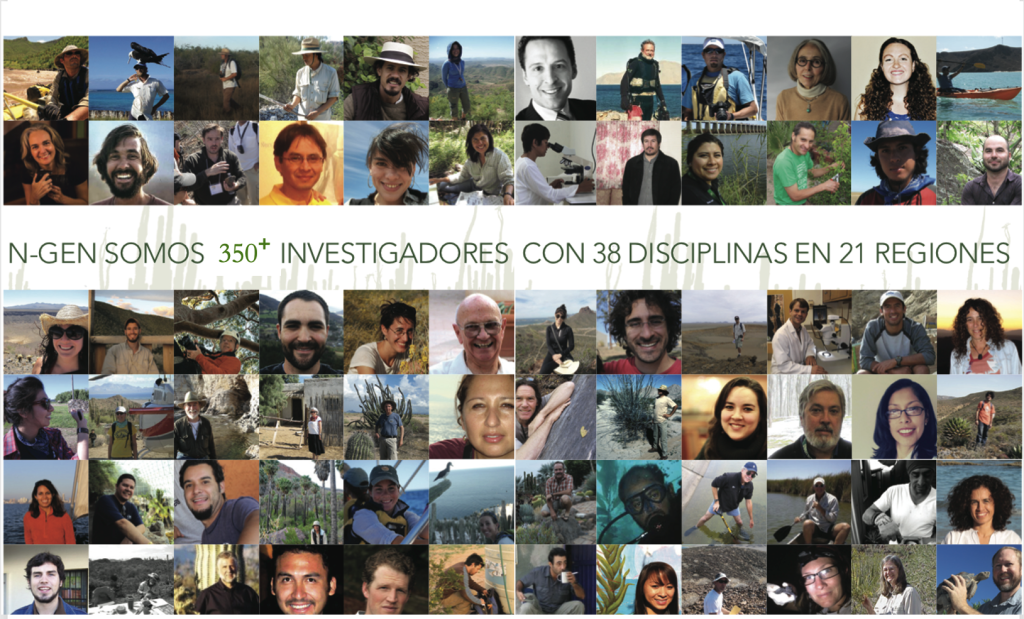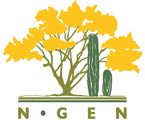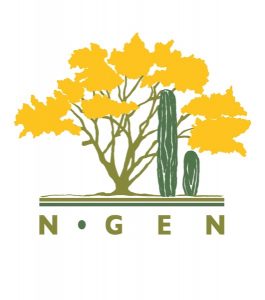
Title: Social networks
Convener: Jennie Duberstein
Participants: Jennie Duberstein, Jorge Torre, Carlos Gonzalez Sanchez, Layse Lineberger, Kurt Anderson, Lani Hanna, Rodolfo Alatorre Gutierrez, Xolotl Paloma Ponce Gonzalez, Laruen Twohig, Alvin Suarez Castillo, Horacio Cabrera Santiago, Mario A Escalera, Mariana Delgado Fernandez, Jonathan G. Escobar Flores
Discussion:
Jennie introduced the article by her and Andres in the special issue of JoSW. Looking at how the summit in 2012 created connections. Jennie and Andrés met at the 2012 summit and worked on the social network analysis together.
Objectives:
- Discuss next steps from the 2012 study.
- Talk about the survey that was passed out here (why and what it’s for).
- How can we improve communication and collaboration in the network?
- Have action items come out of other sessions? How can N-Gen facilitate communication or collaboration for the projects or goals that come out of the sessions?
- How can we use social media to make N-Gen even stronger and improve collaboration?
How can we use the NGen network to distribute information and increase collaboration? How can we increase the network in size? How can we use the network to improve our research and make new connections with people we didn’t know about before?
How can we also take advantage of social media in order to disseminate information that might be restricted (in terms of access and in terms of style of communication, communicating to various populations)? Social media can help with this (and also open access, which was implied in the comment). Social media is undervalued and underutilized.
Jennie distinguished between social networks and social networking (e.g., Facebook, Twitter, Instagram). Here we are interested in social networks generally, and social networking as a tool for growing and accessing the network.
Do we want to look at how the network has changed since 2012? Is this an important thing to do? What are the collaborations that have happened in the last 3 years (based on the N-Gen network)? Has the N-Gen work reached new folks in this time as well, should we look at that impact (if possible)?
- Would be a relatively major endeavor to replicate the 2012 survey or conduct something similar with current participants.
- There are many new faces at the 2015 summit, so it would be interesting to know who is connected and how the summit served to connect them.
Do we have the network from before, during and after? Jennie responded saying she wanted to discuss this in the session.
- Discussion of NGen website profiles
- The profiles in the website do not indicate when someone is an expert or not (and people put that they work in areas where they are not experts). It’s not clear to folks how to fill out and use the profiles. The profiles don’t explicate the capacity of the “researcher” via their profile.
- We’re all experts and we’re also not experts. We expect to have experts or mentors but that maybe it doesn’t exist.
- Consider adding fields in order to indicate, “what you can do” and “what you can offer” instead of just mere interests. How can we add more information to increase the access to what people do and what they can contribute (and in what projects they are involved in).
- Add links to social media of the individual (e.g., Twitter, LinkedIn, etc.).
- You can also use the Google Group of N-Gen in order to look for an expert in something. We also have a Facebook page and a Facebook group.
- N-Gen is not a network of “experts”. But the information of with whom people are connected with could be accessible by contacting someone and accessing their contacts.
- Could we visualize the network and the nodes of the network on the website? Here you would click on a node to see the connections of each individual. But this format might be a little too complicated for first time network users.
- Could we look at the nodes and the network and the connections over time to see how we are doing?
- How many network members (folks who have profiles) are individuals who will never come to a meeting or never be “productive” in the network? These types of folks are not contributing to the collaboration of the network. In this sense it would be more productive to have that information to be more accurate about the size of the network. (Could we have a way to delete your profile if you are leaving the network?)
- We can learn about new folks through the profiles and the emails. Ben brought up the case of someone who has a profile but is inactive and his profile lead someone to find us even though he is no longer active.
- Need to think about access for people who don’t have access to the Internet (rural, poor connections, etc.) and how to ensure their involvement if interested.
Some people who are not on Facebook, for instance, have felt “out of the loop” since they didn’t see announcements of the summit. They feel left out. How can we involve these individuals? - How can we also think about extending the network to include more individuals or that se corre la voz to prevent this feeling of being left out? Could we use the Google Group more to share information? Could we also use people who communicate personally between colleagues? This might be more effective in many cases.
- In cases where there is no access to the Internet or the signal is really poor so consider having a person or persons who could personally communicate the information.
Is the profile a roadblock or a speed bump that prevents folks from joining? There are some who don’t have access to Internet but there are others who just don’t use email. There are proactive people who want to make connections and others who aren’t interested (which is their prerogative). Many are still interested and participate even though they have difficulty connecting. Ultimately we want to build a network where anyone with an interest can participate, regardless of access to technology. Need to consider whether there are key people who can help maintain the network in areas where access to technology is poor, or where people simply don’t use the Internet.
What is the goal of the individual contacts (or the profile)?
- It wasn’t necessarily clear if the group was a closed group or if it’s relevant to join the group or not. Many folks want to participate but don’t have contacts and are timid to reach out. From outside it is a bit confusing if the group is for everyone. Is it exclusive to researchers? What is the group about? Consider reviewing the website to make sure that it is clear that anyone who wants to join the group is welcome.
Who can participate and what is it about? Those are different issues.
It seems like that we are a very representative group of the region. But there are still folks who would like to participate but they don’t know how to join or what it is about. We haven’t grown enough to be able to respond to all of the disciplines and all of the needs.
It’s also not clear to some folks if the group is age specific or not. It’s confusing.
One way to grow the network: spread the word with colleagues and friends.
There are different types of collaboration. Maybe you don’t have a project but you are interested in collaborating with someone else.
In addition to thinking about how to continue to grow the NGen network, we need think about how we can strengthen what we have and utilize the connections and the individuals and the existing networks. The number isn’t necessarily the end goal but rather the way that folks are collaborating and focus on co-designing projects.
What comes next? What are the priorities?
- Consider replicating the ego network survey in the future, with the same individuals; has participation in NGen served to make people more (or less) interdisciplinary in their work?
- Use the tools that we have (e.g., Facebook, Twitter) to maintain the network and collaboration, as well as to share results of our collaboration and co-design efforts. Make a stronger effort to share the work and successes of NGen members on NGen social media (instead of just general interest items about the Sonoran Desert)
- Consider how to translate the JoSW articles into appropriate social media format (summarize each chapter in 140 characters for Twitter, write a short paragraph about each for Facebook; make it about more than a link to an article). Also share posts about positive connections that have been fostered by N-Gen. It doesn’t have to be a paper or a project; it can just be the connection. Also think about how to get this kind of info that is digestible in social networks. Find ways to share the connections we have made (even if it just a connection). Action item: talk with Prescott College students to see if they would be interested in in helping with this.


